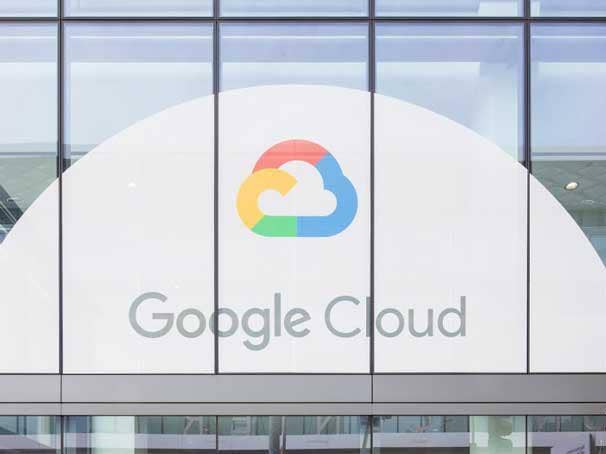Google Expands Anthos 5G Ecosystem With Over 30 New Tech Partners
“When 5G is available to them, enterprise customers can benefit from higher speeds and lower latency, and Anthos makes it very easy for these customers to then deploy an application once and scale it across networks, including to the edge—which is why we call it ‘the effortless edge,’” says Amol Phadke, Google Cloud’s managing director for telecom industry solutions.

Google Cloud is expanding the 5G ecosystem around its Anthos multi-cloud application development technology by partnering with more than 30 new independent software vendors, or ISVs, who are readying over 200 5G-focused edge applications.
Amol Phadke, Google Cloud’s managing director for telecom industry solutions, wrote in a blog post that his company is seeing its customers with edge presences, such as transportation companies managing their fleet of vehicles or manufacturers depending on IoT-enabled equipment, looking to modernize their processes with new cloud capabilities at the edge.
“By partnering with these Independent Software Vendors (ISVs), we’re enabling the rapid delivery and deployment of new vertical services and applications, leveraging Google Cloud core components, including Anthos, artificial intelligence (AI), and machine learning (ML), as well as Google’s global edge network and our telecom partners’ networks,” Phadke wrote in his blog.
[Related: Google’s Sundar Pichai’s 9 Biggest Statements At Tech Hearing]
Google Anthos, first introduced in April 2019, is a rebrand of the Google Cloud Services platform, but with an emphasis on deploying workloads seamlessly across multi-cloud environments, stepping into the territory of competitors like Amazon Web Services. Google Cloud Services, introduced in 2018, integrates a version of GKS “Google Kubernetes Service) modified to run on premises with the Istio open source service mesh technology that Google has been leading.
The new 5G partner ecosystem follows Google’s move in March to forge new alliances in the telecommunications industry, starting with AT&T and followed in June with Spain’s Telefonica. Those earlier alliances were formed through Google’s new Global Mobile Edge Cloud (GMEC) strategy under which Google works with its telecom partners to bring to market a portfolio of 5G solutions, a cloud platform for developing network-centric applications, and edge computing resources that allow enterprises to deploy those apps in the field.
Phadke wrote that the coming 5G technology will bring a host of new services to customers via 5G-enabled devices that can help replace existing on-premises infrastructures.
“Leveraging existing global networks from Google and our communication service provider (CSP) partners, businesses can reduce latency, lower processing costs by processing data and compute cycles at the edge, reduce costs and processes associated with data storage, and eliminate the need to transport data from the edge to a central location for real-time computation,” he wrote.
Phadke, in an emailed response to a CRN request for more information on how Google works with 5G, said that Google Anthos and the Google Cloud ISV partners are being prepared for when 5G becomes available.
The Google Anthos platform lets applications be deployed across virtually any hardware, cloud platform, or network so that customers could use Anthos to run applications across hybrid-cloud or multi-cloud environments, he told CRN.
Google Anthos can also act as a platform for deploying applications to the network edge and across networks including 5G, he said.
“There are many enterprise use cases today which are serviced by 4G, but there are of course limitations with regards to bandwidth and latency especially when it comes to enterprise applications,” he said. “When 5G is available to them, enterprise customers can benefit from higher speeds and lower latency, and Anthos makes it very easy for these customers to then deploy an application once and scale it across networks, including to the edge - which is why we call it ‘the effortless edge.’”
Among the 30-plus ISVs partnering with Google Anthos on 5G technology are seven IoT and manufacturing-focused companies building technology for such things as cloud-based controls for warehouse robotics or serving augmented reality or virtual reality to factory technicians. Those seven ISVs are Ayla Networks, Dematic, Dianomic, Litmus, Nex Computers, Siemens Advanta, and Techolution.
In the media and entertainment business, where Phadke wrote businesses are looking to bring new consumer experiences to the edge, partners include Broadpeak, Firstlight Media, Harmonic, Motojeannie, MediaKind, Multicasting.io, and Synamedia.
On the retail side, Phadke wrote that businesses are going through rapid digital transformation, particularly at the edge, to improve customer experience or backed processes. ISVs partnering with Google Anthos in this business include Qwinix, Trax, Trigo, and Zebra Technologies.
Google Cloud is also partnering with multiple horizontal solution providers to build solutions to support and enable use cases across multiple verticals, Phadke wrote. These include Apptium, Cellwize, DigitalRoute, Equinix, Expecto, Guavus, Headspin, Infovista, Magic Leap, MobiledgeX, Palo Alto Networks, RIFT, Robin.io, and Thales.